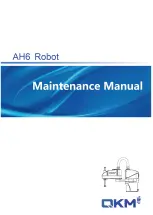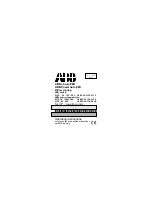
WARNING:
The tools have to be properly secured before operating the robot.
Keep fingers, clothes and hair away from the tool while the power is on.
Always use protective glasses when working with sharp objects.
Always ensure complete shutdown of the robot when working on the system
for maintenance or inspection.
Do not use the tools on people or animals.
Do not perform any modification to the tooling.
If the robot supports a bounded workspace/ speed/ force limit, make sure to
use those features.
Select robot trajectories that minimize risks of internal clamping between
robot joints and tooling.
2.3. Risk Assessment
The robot integrator must perform a risk assessment on the complete robot application.
OnRobot tools are only components in a robot application and therefore they can be only
safely operated if the integrator has considered the safety aspects of the whole application.
OnRobot tools are designed with relatively smooth and round design with a limited amount of
sharp edges and pinch points
In collaborative applications, the trajectory of the robot can play a significant safety role. The
integrator must consider the angle of contact with a human body, e.g. orientate OnRobot tools
and workpieces so that the contact surface in the direction of movement is as large as
possible. It is recommended that the tool connectors are pointed in the direction opposite to
the movement.
OnRobot A/S have identified the potential hazards listed below as significant hazards that
must be considered by the integrator:
•
Objects flying from OnRobot tools due to loss of grip
•
Objects falling down from OnRobot tools due to loss of grip
•
Injuries due to collisions between humans and workpieces, OnRobot tools tooling, robot
or other obstacles
•
Consequences due to loosen of bolts
•
Consequences if OnRobot tools cable gets stuck to something
•
Workpiece itself represents a hazard
2.4. Environmental Safety
OnRobot A/S products must be disposed of in accordance with the applicable national laws,
regulations and standards.
The product is produced with restricted use of hazardous substances to protect the
environment; as defined by the EU RoHS Directive 2011/65/EU. These substances include
mercury, cadmium, lead, chromium VI, polybrominated biphenyls and polybrominated
diphenyl ethers.
Observe national
requirements for importers according to EU WEEE Directive
2012/19/EU.
SAFETY
9
Summary of Contents for 2FGP20
Page 1: ...USER MANUAL FOR UR ROBOTS v1 13 0 Original Instructions...
Page 62: ...Illustration Pad position Maximum force N 2 200 3 100 4 400 HARDWARE SPECIFICATION 62...
Page 71: ...8 2 3 Tools 8 2 3 1 2FGP20 All dimensions are in mm and inches HARDWARE SPECIFICATION 71...
Page 79: ...12 Certifications CERTIFICATIONS 79...
Page 80: ...12 1 EMC 12 2 2FGP20 Environment CERTIFICATIONS 80...
Page 81: ...12 3 Declaration of Incorporation 12 3 1 2FGP20 CERTIFICATIONS 81...



































